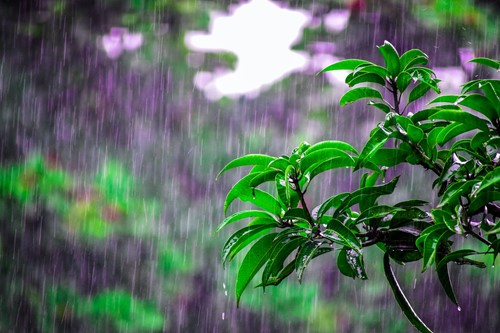
Rain chains are a popular feature of Japanese architecture and landscape design. They’re popular all over the world wherever homeowners want to turn rainfall into a piece of art or provide valuable drainage functions. While rain chains are a popular trend and have some real benefits, they may not be right for everyone. Here we’ll go over the basics of rain chains and the major advantages and disadvantages to help you decide.
Why Rain Chains?
Rain chains are popular for several reasons. Here are some of the major advantages to consider:
Less expensive than gutters - Rain chains are typically installed to replace gutter spouts. They can direct rainwater away from the foundation of the house. Gutters are universal in home construction but can be expensive to maintain and repair. It’s easy for gutters to get clogged with leaves and other debris, so much so that there are entire businesses dedicated to cleaning them. That alone is a sign that a rain chain may be the less expensive alternative you need.
Aesthetically pleasing & versatile - Designers and architects love rain chains for being attractive yet subtle and efficient exterior features. The basic design principle is simple and versatile enough that you can make them out of almost any waterproof materials. This means you can customize them to fit your personal style and the style of your home. They can serve as artistic statement pieces on their own or blend in perfectly to the exterior facade.
Celebrates nature - The inspiration for rain chains in Japanese architecture comes from the desire to celebrate and connect with nature. Rain chains use the same principles of water dynamics you find in the natural world: rain water flows and trickles over the chain similar to how it flows over rocks and mountains. Compared to a gutter spout, a rain chain creates a much more peaceful and pleasant-sounding ambiance that complements the rain rather than drowning it out with a loud splash of water hitting the ground.
Rain Chain Disadvantages
While they have many benefits, rain chains aren’t perfect for every home. Here are some reasons:
Less sturdy than downspouts - Rain chains cannot handle as much water as traditional downspouts. Areas with very heavy rain may even prove damaging to rain chains where a normal gutter spout would perform adequately. Rain chains may also not direct water away from the foundation well enough if not installed correctly.
Vulnerable to wind & freezing temperatures - Rain chains hang freely from the eaves of the house and are therefore very prone to blowing in the wind. Even rain chains made of the heaviest materials and sturdiest chains may not survive or function well in areas with high winds. Freezing temperatures also cause problems because any water on the rain chain will freeze, making it extremely heavy. This puts strain on the eaves and poses a potential hazard if it falls.
Overall, rain chains are a wonderful addition to your home if you want to explore alternatives to gutter spouts. They are a great way to add artistic flair to an outdoor space but you should weigh the pros and cons when deciding if installing one is a good idea for your home.
About the Author

Meryl Diamond
While I was born and raised in Brooklyn, New York, I have spent the last 27 years living in the Lisle and Naperville area. The first single family home my husband and I ever owned was in Green Trails, Lisle. There were two things we loved about living in Green Trails - the sense of community and all the green space. This was a dream come true for my children who always had a friend to play with or a babysitter near by. For me, it gave me a chance to get to know the neighbors whom I have built lifelong friendships with. From neighborhood garage sales to summer barbeques, we always found reason to come together.
